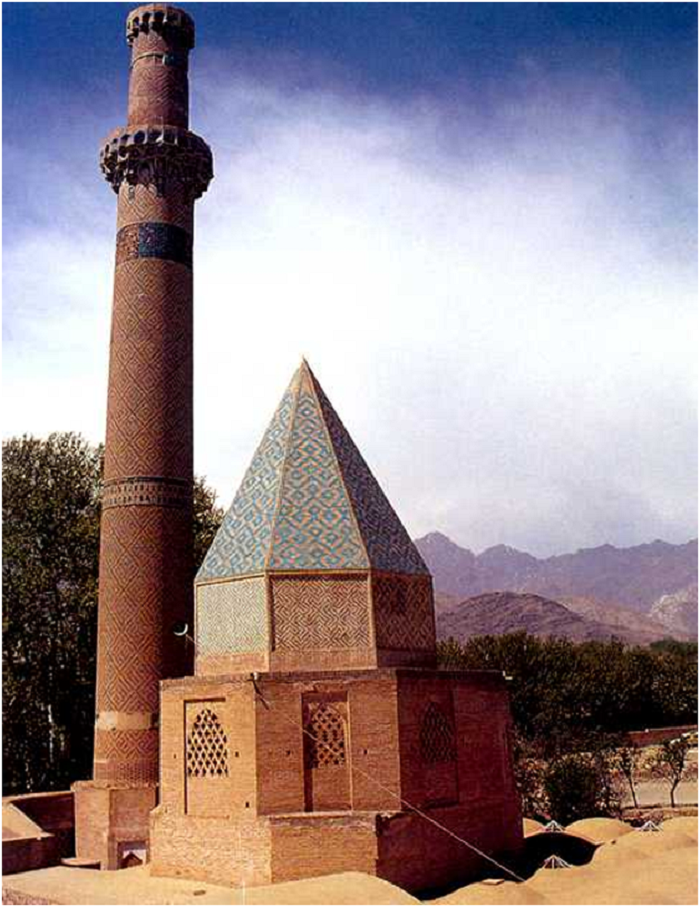The Center of Mosque Studies - Sheikh Abd al-Samad Esfahani was a noted holy man in Ilkhanid era of Iran who died at the end of the 13th Hijri Century.
In the early 14th century (1308) the Il-Khanid Vizier Zain al-Din Mastari built the tomb and mosque and dedicated it to his master Sheikh Abdolsamad. "The center of the façade is composed as a triple arcade, behind the central arch of which there is a minaret with an inscription dated 725/1324-25. Another portal on the eastern end of the façade provides entry to the complex by way of a sunken narrow corridor.

An inscription on this portal reveals that the building is a mosque built by Zayn al-Din Mastari in 704/ 1304-5." The Sheikh Abdolsamad is an important example of Persian architecture. The mosque incorporates Kharazmshahi and IlKhanid design elements, "As mentioned before like the Khawrazmshahi porticoes the porticoes built by Ilkhanid architects are higher than Seljuk ones. In other words compared to the height of the portico the entrance is larger.

Meanwhile in order to engross the size of the portico two columns are set at the sides of the porticoes at the facing. An example of such architecture can be found in the tomb of Sheikh Abdolsamad in Natanz (Wilber 83). The ceiling of Khawrazmshahi portico is arched and ribbed and differ from that used by Ilkhanid masons."

"The frieze originally decorated the tomb of the sufi shaykh Abd al-Samad at Natanz, built by the vizier Zaynal-Din and completed in the spring of 1308. Part of a larger religious complex, "the tomb is a chamber approximately six meter square erected on the site of Abdal-Samad's residence across a lane from the mosque. As at Bastan the shape is traditional, but the interior is decorated with the finest fittings Zayn al-Din couldprocure. The walls were all revetted with a (...)dado of luster tiles (...) often recognizable by a friezeof paired birds whose heads were later defaced by somezealous iconoclast (S. Blair - J. Bloom, op. cit.,p. 10; see also the more detailed study by Sheila Blair,The Ilkhanid Shrine Complex at Natanz, Iran,Cambridge, Massachusetts, 1986, pp. 50, 64, and pl.53)." The inscription on the frieze may have run above six rows of star and cross tiles."
